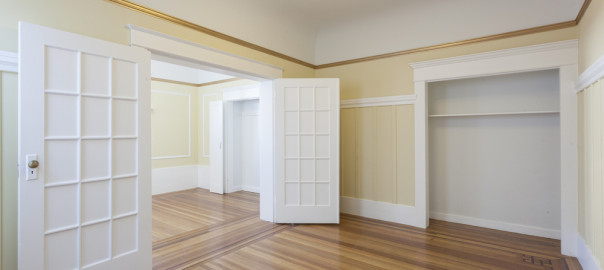Landlords: The Transition Period Between Tenants
By JD Esajian on May 12, 2014
Spring has long been recognized as the prime time to list a property, but it is also a prime season for many tenants. June 1 is a popular starting point for many new leases which means that, as a landlord, you have the task of transitioning existing tenants out while ushering new ones in. If you are not careful, it can be very easy to get overwhelmed and become lax with your screening and new tenant due diligence. One mistake made before your tenant moves in can have a lasting impact. It is critical to make sure that you dot your I’s and cross your T’s before your new tenant moves in. The transition time between tenants is critical to the success of a buy-and-hold investor.
The more organized you are, the smoother the process will go. This means taking advantage of any free time you have and perfecting your moving out and moving in packages. The move in package should consist of the lease, the application, any disclosures and a list of other pertinent information that pertains to the property. Don’t expect your tenant to read every line of the lease. Take the time to highlight items that are important to you. These may include smoking, pets and parking rules. If you assume that they know the expectation you have for them and the property, you may be disappointed shortly after they move in.
It is also critical that you document the condition of the property before they move in. It is a good idea to walk the property on the first day of the lease when the property is vacant and take as many pictures as possible. You can send these photos through email to your tenant so they can confirm the condition. Too many times a landlord will not be at the property or be there just long enough to hand over the keys that they do not protect themselves if disputes about the condition come up down the road. What you do before the lease or on move in day can have a major impact for the next nine months or more. Whatever else you have planned for that day can wait an hour until you are done with your new tenant. This will also set the tone for how the relationship will be moving forward and open lines of communication.
You shouldn’t assume that your tenant knows when, where and how to pay the rent every month. One of the forms in the packet should be detailing how you want to get money, when it is due and what the repercussions are for a late payment. You should assume your tenant knows nothing and this is their first time renting. If you do not collect rent on time or at all, everything else you do with the property is for naught. Everything from whether you want a personal check, money order or cash should be emphasized and broken down. If you want your payments automated, you should set them up beforehand. Collection of rent is the most important task for any landlord. Make this as easy as possible for your tenants.
It is important that you spend the time to leave no stone unturned before your tenant moves in. The more detailed you are before they move in, the better the next nine months will be.